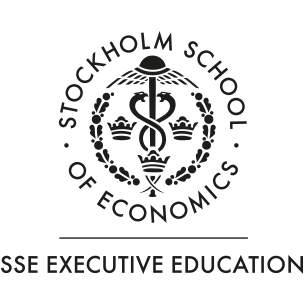Social innovation – from improving the quarterly report to improving the world
Anders Richtnér is without doubt one of Sweden’s most prominent researchers in the field of innovation. As associate professor and head of research at the Stockholm School of Economics Center for Innovation and Management in addition to being responsible for the SSE Executive Education innovation team with a wide range of research projects in both ongoing and planning phases in the field of innovation, one can reasonably conclude that he has several irons in the fire when it comes to innovation issues.
The worn cliché that someone “is passionate” about their work certainly feels worn-out, but at the same time it is difficult to find any other description when listening to Anders Richtnér,
– Sure, my wife says that I work a bit too much. But it is so terribly difficult to resist when one has the best job one can imagine, he says with a chuckle.
The field of social innovation – what it is, how companies handle it and its impact on traditional business models of industry – is something Anders Richtnér has devoted much of his research to over the past years, including as visiting professor at Babson College in Boston, USA.
What is social innovation exactly?
– In simple terms, one could say that it is about trying to find a way to combine social commitment and creating change to operate a company which also may, but not must, generate a profit. Essentially, however, there are greater issues when it is about tackling societal challenges in new and broad ways, says Anders Richtnér
He also believes that the field of social innovation places entirely new demands on companies since it is often a question of linking different operators who have not previously interacted with one another. In order for social innovation to mean anything and not just be another industry term among others, companies and organizations also need to question previous obvious factors such as business models, who is the customer really and what good one does as a company.
– One must have the courage to fundamentally question the value of what one delivers. Is it the profit of the latest quarterly report that is the most important, or is it something else which that profit is a result or consequence of? In English, the term is social impact, that is to say the difference our actions mean for society. To begin working in this way is of course difficult, since we often act in accordance with established structures, but that is also what makes the whole question so exciting.
Here you can see a film where Anders Richtnér develops ideas about social innovation based on a concrete example:
How is the view of social innovation in industry today, can one easily get the impression that it is dismissed as vague and a bit “fuzzy”?
– On the contrary, more and more companies and organizations are currently taking an active responsibility.
And this in the area where any profit in the truest sense of the word cannot be recouped per say, which conversely is that which the industry traditionally wants to achieve. There are a number of good Swedish examples, such as H&M, SCA and Axfood, which try to take an active role. One says of course that we will make a profit, but we will also take a greater responsibility, just as we see that consumers want to do so. Five years ago it was possibly more controversial to talk about these issues in the industry. Now one wants to do good AND make a profit. It does not need to be either or.
How does SSE Executive Education contribute to this development?
Above all as a meeting place and an arena in which the previous non-obvious operators are given room to learn from one another. For example, we have a seminar in February on the theme of “What can we learn from the arts?” (hyper link to the seminar here) We then start from current major global challenges, since an understanding of the major developments in the world contributes to becoming a better leader in what one does in their own little niche. For example, right now the issue of immigration is relevant. What can one do about the issue from a social innovation perspective? We in the industry are generally good when it comes to fast solutions here and now, but miss out on the greater issues behind. This is something we need to become good at, and here with its often timeless and totally different perspective, the arts can contribute enormously.
As leader of the SSE Executive Education innovation team, Anders Richtnér is also trying to live as he learns. Different competencies for different challenges are needed to create change, he believes. The innovation team is therefore no static organization, but more of a classic network, a living organism, where different competencies are included depending on the solutions that are pursued and the needs which the customers have. As an example of what SSE Executive Education offers in the field of innovation, Anders Richtnér mentions his colleague Nadav Shir, who conducts research in welfare and happiness, and during the spring holds the program Developing and motivating innovation teams.
What would you say that SSE Executive Education has to contribute to Swedish industry today?
– All who are world leaders in anything – opera singers, football players, actors – have something in common: they practice all the time. In order to be able to perform, we must train. That was why we went to school to start with. No one wins or develops without training. And the advantage of training and learning through the SSE Executive Education models is that we seem to be in the borderline between research and entrepreneurship. Research looks at overall developments and patterns and creates academic models, while industry is more here and now. What we contribute with is translating these models back to companies. What is it that actually makes companies and organizations better or worse? In this way we can contribute to our customers avoiding traps that others have already fallen into. It is about packing enormous amounts of knowledge into specific tools that can contribute to the way of thinking which leads to becoming better at what one does, says Anders Richtnér.


